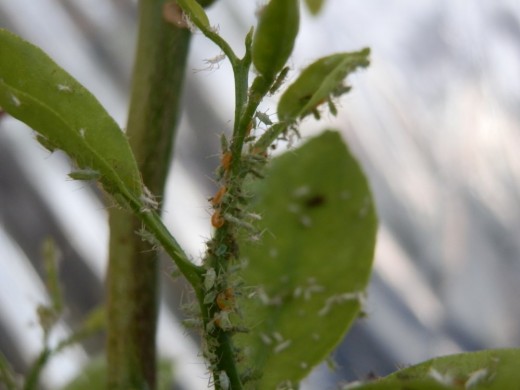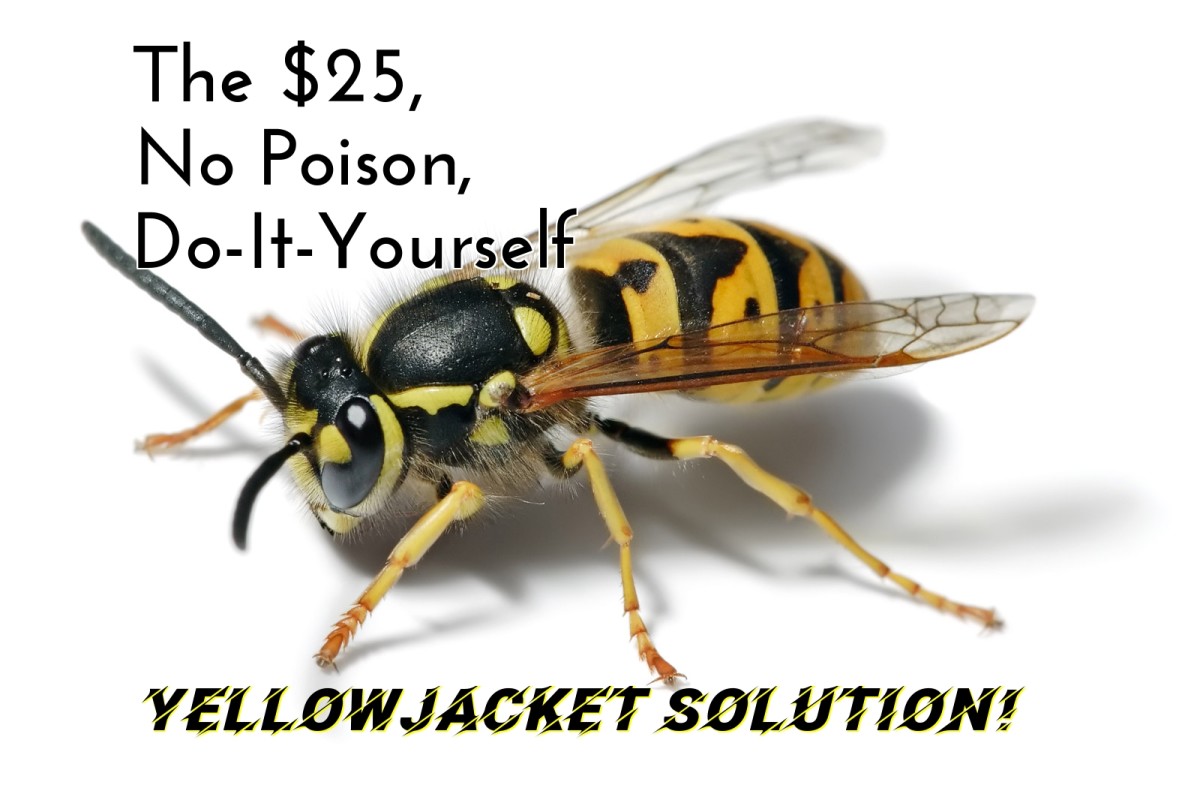How to Control Greenhouse Aphids Without the Use of Pesticides
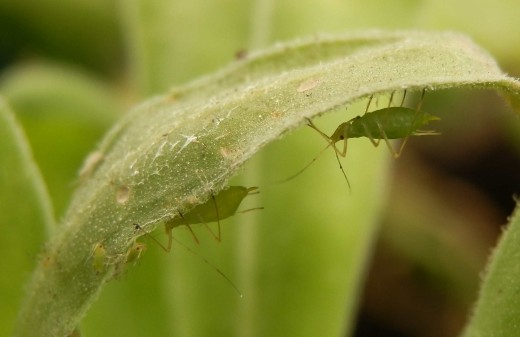
As more and more pesticides find themselves banned throughout the world, the gardener is left with the problem of how to control greenhouse aphids.
These little pests that include greenfly, blackfly and whitefly, are the bane of gardeners everywhere.
While some years greenhouses can resist infestations, other years aphids can ruin a good tomato, pepper or other greenhouse crop.
Gardeners more and more are having to look at natural pest control methods, and those include the use of companion plants and nematodes.
Companion plants are plants that aphids love, even more than they love your tomato crop, while nematodes include a range of insects that like to eat aphids.
Why not have both?
If you look to the web, you are sure to find a supplier of any amount of nematodes that you can introduce to your greenhouse.
I strongly recommend the purchase of any kind of parasitic wasp.
You may well find that those wasps, that are tiny and bear no relation to the garden wasp, live locally, in which case all you have to do is provide the perfect conditions for them to enter your greenhouse.
To encourage them in, you will need to provide the aphids for them to feed on, so make sure you have some companion plants growing in your greenhouse all year round.
Companion Plants - Calendula Officinalis
In my own experience I have found that calendula (pot marigold) fits the bill perfectly. Buy some seeds, grow them in pots, and place them in the greenhouse.
Make sure they have water all year round, and as each flowerhead dies, collect the seed and re-plant so that you have a continuous display.
Some calendulas will survive the winter, even in an unheated greenhouse, and that situation is ideal, because aphids can live year round on calendulas.
Don't remove last year's greenhouse vegetation
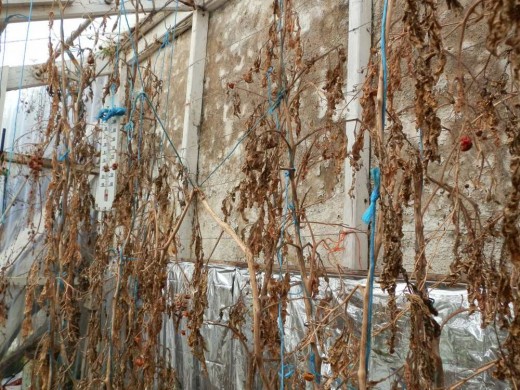
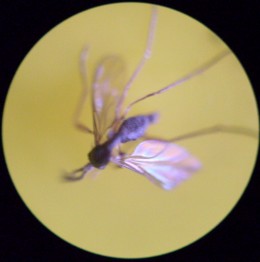
Populations of aphids tend to explode in greenhouses as the weather warms up, yet once a predator is present, you will find that the infestations remain under control at all times.
It is vitally important that:
- you grow a companion plant for the aphids, otherwise the few that are present will attack your crops
- you do not clean out your greenhouse at the end of the season, in order to provide a suitable overwintering environment for the predators
Parasitic wasps
If you want to have those tiny flies, of which there are a known 30,000 species, taking care of the aphid population in your greenhouse, then you have to take care of them.
Provide as near as possible a natural habitat for them.
In winter, when vegetation dies down, resist the urge to clean everything out. Parasitic wasps need all those dead leaves and stalks for winter protection.
So leave them be, until the spring when the weather warms up.
Hopefully, come the spring, you will have safely overwintered your family of predators as well as your aphids.
Then you can safely clean up your greenhouse, making sure that your pot marigold plants, complete with aphids, are tended and cared for. You cannot see the nematodes, but they will be there.
Parasitic wasps need aphids for the survival of the species.
They lay their eggs inside the aphids, and when the babies hatch out, their sustenance is the insides of the aphids until they eventually eat their way out, resulting in the death of the aphid.
Gross, I know, but this is Mother Nature in action, and the end result is that your greenhouse crops will come to fruition unscathed by the many destructive pests that can be found in greenhouses.
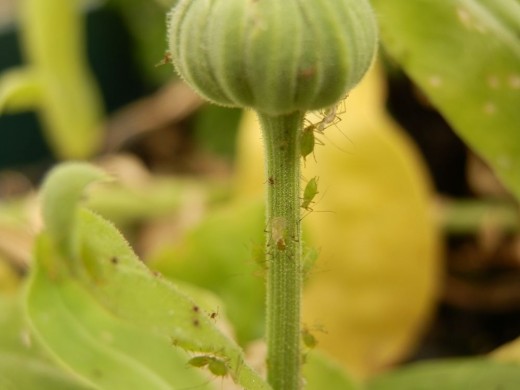
aphidoletes aphidimyza
Also known as the aphid midge, aphidoletes aphidimyza seems to have visited my greenhouse this year.
Two days after the weather finally warmed up in May (in the UK), I was delighted to see tiny wriggly orange larvae appear among the aphid colonies which have exploded in numbers in the past couple of weeks.
The adult female midge seeks out colonies of aphids in which to lay her eggs. These larvae kill and feed off the aphids. Each wriggly can eat up to 50 aphids per day each, but kill many more by injecting a poison into their legs.
Each aphid midge has a lifespan of about 6 weeks, during which time they will not only kill lots of greenfly, whitefly or blackfly, they will greatly reproduce themselves.
This insect is a welcome summer visitor to the greenhouse, and their arrival heralds an end to the gardener's worry about his crops.
They are completely harmless to us.
Aphid predators at work
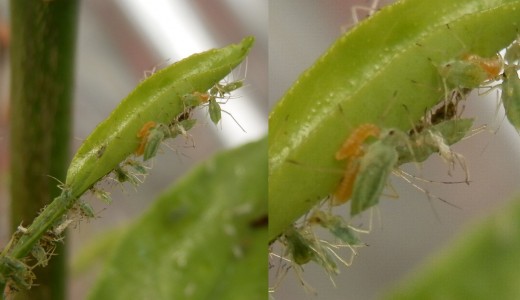
Thanks to the banning of the most effective chemical pesticides in Europe (and perhaps the rest of the world), insect numbers should be booming, and yet they aren't.
As it turns out, we are seeing Nature at work. More and more, gardeners are finding parasitic wasps and aphid midgies just appearing naturally in their greenhouses, without having to buy in colonies from specialist companies.
These beneficial insects live in gardens, and perhaps haven't been noticed before, being so very small and unobtrusive. Or perhaps they have been especially susceptible to insecticides...
Now, they are returning in numbers, and if you leave your greenhouse door open in warm weather, may fly in and colonize in your greenhouse, especially if aphids are already present.
Insecticides will kill the predators as well the aphids, and so must be avoided completely, even if you do still have some chemicals in storage. Don't use it, it never worked for long anyway, it is better to wait for help from nature in the form of natural aphid predators.
